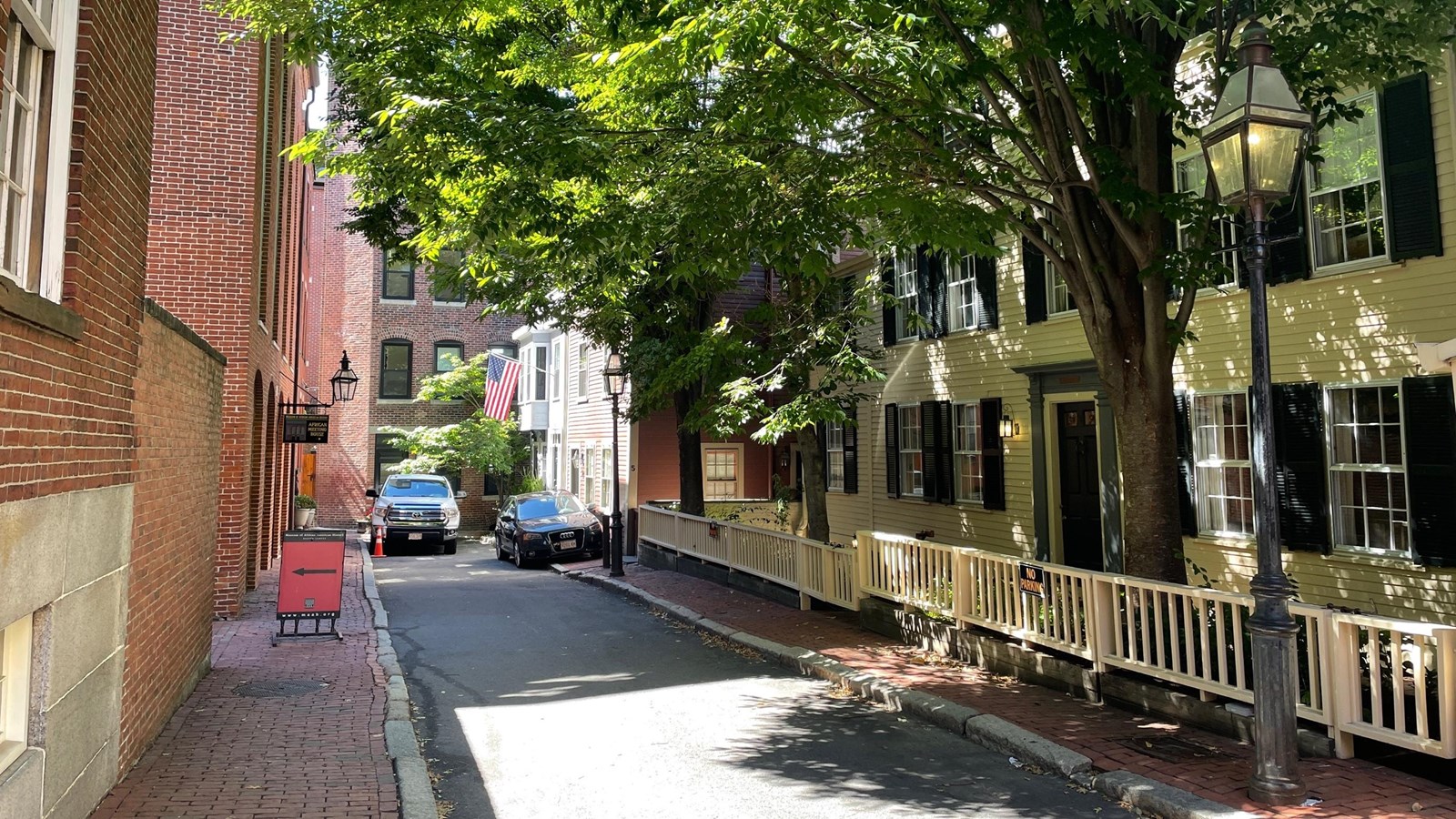Last updated: January 24, 2025
Place
Smith Court, Beacon Hill

NPS Photo/Woods
Tucked away off today’s Joy Street on Beacon Hill, Smith Court served as a center for Boston’s free Black community throughout the 1800s and into the early 1900s. Residents of Beacon Hill saw Smith Court as a community center where people came together to remember and celebrate significant events, as well as congregate for spiritual, educational, and political gatherings.
Two historic structures in particular, the African Meeting House and the Abiel Smith School, played crucial roles in this community. The oldest extant Black church in the United States of America, the 1806 African Meeting House hosted meetings and gatherings that pushed for justice and equality for African Americans. The neighboring 1835 Abiel Smith School became one of the first public school buildings for African American children in the country, later serving as a meeting space for the Black community.
Apart from the African Meeting House and Abiel Smith School, homes also line Smith Court. Several of these residences played a role in the Underground Railroad, providing shelter to freedom seekers.
